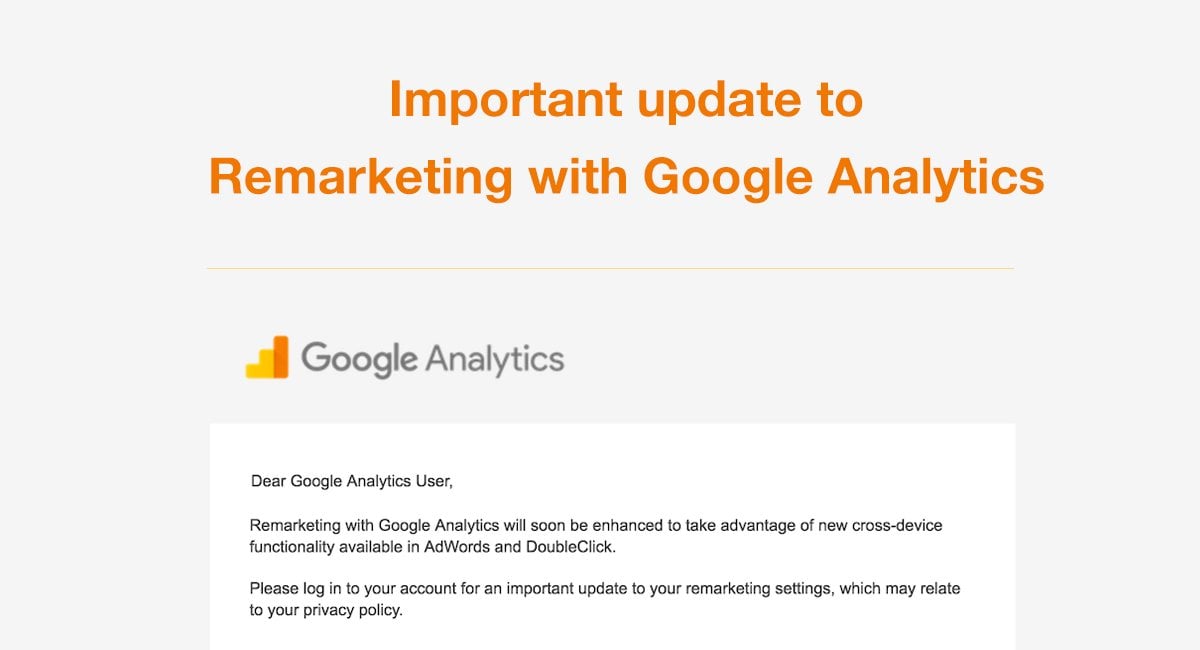Maximize Your ROI With Remarketing in Google Analytics
By taking advantage of the power of user information and tailoring advertisements to certain audience segments, companies can substantially enhance their conversion prices. The journey to optimizing ROI via remarketing is a nuanced path paved with understandings and possibilities that can reshape the trajectory of your marketing endeavors.
Comprehending Remarketing in Google Analytics
Recognizing remarketing in Google Analytics is important for maximizing your digital advertising and marketing method. Remarketing allows you to target users who have previously visited your website or communicated with your app, offering them with tailored advertisements as they browse other sites or use various other applications within the Google Show Network. This method assists keep your brand name top of mind and motivates users to go back to your website, eventually increasing the possibility of conversion.
By utilizing Google Analytics, you can track the performance of your remarketing projects, obtaining valuable insights right into customer actions, involvement, and conversions. This information enables you to fine-tune your messaging, bidding, and targeting strategies to enhance the total efficiency of your projects.
Moreover, recognizing the various kinds of remarketing lists offered in Google Analytics, such as typical, dynamic, and comparable target markets, enables you to create very segmented and customized campaigns customized to specific user segments. This degree of granularity can dramatically boost the significance and impact of your remarketing efforts, inevitably optimizing your return on financial investment.
Setting Up Remarketing Lists
To properly apply remarketing projects in Google Analytics, the initial action entails configuring and creating remarketing lists targeting particular customer sections based upon their interactions with your site or app. By establishing up remarketing listings, you can customize your advertising and marketing initiatives to get to individuals who have currently revealed interest in your services or items.
To start, navigate to the Admin section of your Google Analytics account and select the Residential or commercial property where you wish to develop the remarketing list. Then, under the Home column, click 'Audience Definitions' and pick 'Target markets.' Next, click on the red 'New Audience' button and select 'Develop New' to define the criteria for your remarketing checklist.

Crafting Effective Remarketing Advertisements

When crafting your ads, concentrate on producing eye-catching headings and compelling visuals that stand apart to prospective consumers. Incorporate strong calls-to-action that motivate users to review your site and complete a desired action. Make use of dynamic remarketing to reveal customized ads featuring products or solutions that individuals have actually previously watched on your site.
Furthermore, ensure that your advertisements are mobile-friendly given that a significant portion of net website traffic originates from mobile phones. Test various advertisement variations to determine which layouts and messages drive the most effective outcomes. By constantly refining and enhancing your remarketing ads based upon performance information, you This Site can optimize their performance and enhance your return on financial investment.
Analyzing Remarketing Efficiency

Through Google Analytics, marketers can track the efficiency of their remarketing campaigns in real-time, permitting them to identify trends, patterns, and locations for renovation quickly. By analyzing the data, marketers can figure out which advertisements are executing well, which audience sections are reacting positively, and which channels are driving the most conversions. This level of granularity makes it possible for online marketers to make data-driven choices to enhance their remarketing advocate far better outcomes.
Maximizing ROI With Remarketing
Analyzing remarketing information in Google Analytics enables online marketers to pinpoint opportunities for enhancing roi (ROI) with calculated adjustments - What Is “Remarketing” In Google Analytics?. To optimize ROI with remarketing, it is important to recognize the habits of your target market. By evaluating individual communications, such as the pages they went to, the items they viewed, or the actions they tackled click resources your website, you can customize your remarketing projects better
Segmenting your target market based upon their actions permits you to create customized and targeted ads that are most likely to resonate with them. By showing appropriate ads to certain sections of your audience, you can raise the opportunities of conversion and eventually enhance your ROI.
Additionally, evaluating different ad creatives, messaging, and offers can aid determine what resonates ideal with your target market. A/B screening permits you to visit homepage trying out various aspects of your advertisements to determine what drives the greatest engagement and conversion rates.
Final Thought
To conclude, making the most of ROI with remarketing in Google Analytics needs a tactical strategy to analyzing individual behavior, segmenting target markets, developing customized advertisements, and maximizing project efficiency. By leveraging data-driven understandings and testing various strategies, businesses can improve their remarketing efforts to drive greater interaction and conversion prices. This organized strategy makes certain that sources are efficiently allocated in the direction of optimizing rois in remarketing projects.
Next, click on the red 'New Target market' button and select 'Produce New' to define the specifications for your remarketing checklist.
By constantly refining and optimizing your remarketing advertisements based on efficiency information, you can optimize their effectiveness and boost your return on investment.
By delving right into these insights, marketers can get a thorough understanding of how their remarketing initiatives are resonating with their target audience and driving conversions. To make the most of ROI with remarketing, it is critical to recognize the behavior of your audience.In verdict, making the most of ROI with remarketing in Google Analytics requires a calculated approach to assessing user actions, segmenting target markets, producing tailored ads, and optimizing project efficiency.